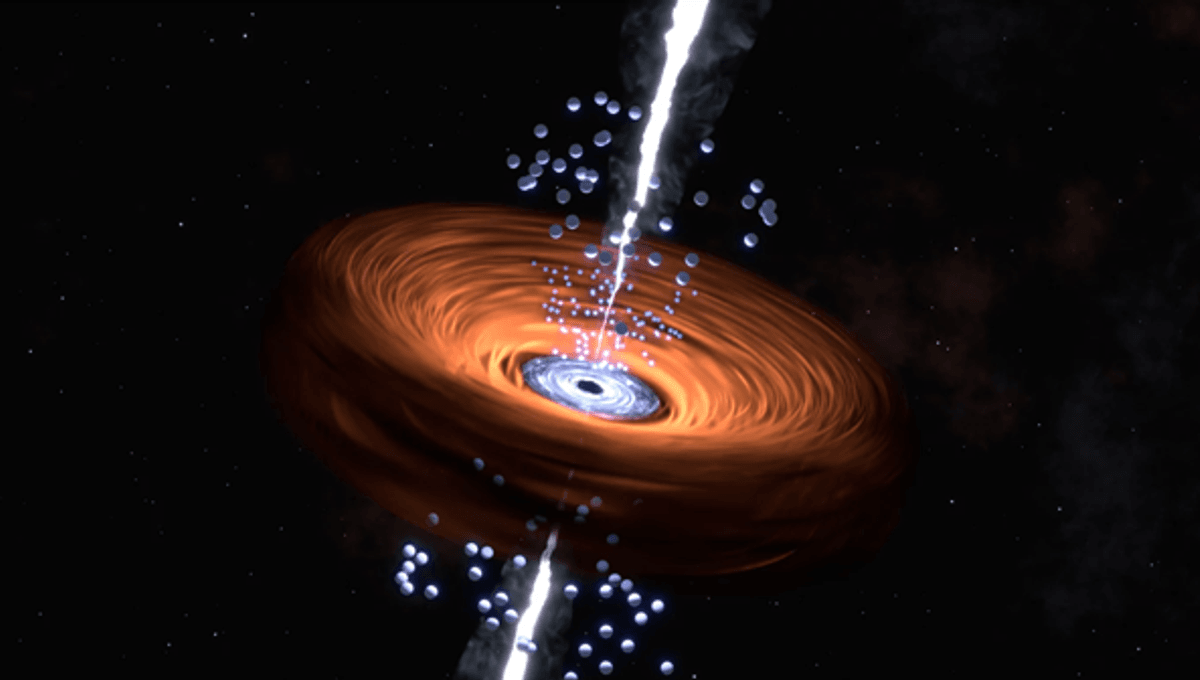
The cosmic puzzle created by evidence of apparently enormous black holes in the very early universe continues to deepen. Observations by the JWST of one such anomaly, known as J1120+0641, indicate that the once favored explanation for how these objects could emit so much light so soon after the Big Bang is unlikely, forcing astronomers to try again.
The extraordinary power of the JWST has allowed astronomers to observe galaxies more distant than any we have seen before. The further we look in space, the longer back we are looking in time – and we’re seeing these objects as they were not that long after the universe was formed. The fact that many of these seem larger and more developed than existing models appear to allow needs explanation,
Among these oddities at the dawn of time are quasars, enormously bright accretion disks surrounding supermassive black holes. The intense brilliance of those of these early quasars, allowing for the billions of light years the light has had to travel, are indicative of very massive black holes.
The dominant model of the universe doesn’t offer a path for black holes to get that big so soon.
One explanation is that the objects we are seeing are particularly efficient at feeding, meaning the black holes are smaller than the quasars they have produced would suggest. This would be a very convenient way out of the mess, were it not that no signs of such efficient feeding have been spotted in J1120+0641, suggesting the black hole at its heart contains more than a billion solar masses.
That doesn’t make J1120+0641 the heaviest anomalously large black hole – some are up to 10 billion solar masses – but it’s still big enough to be a problem given its age. It’s also the first black hole JWST has examined in a way that can test some explanations that would avoid the need to rethink our models of the universe. J1120+0641 was chosen for the task because in 2019, when time was being booked on the JWST, this was the most distant known quasar.
The JWST’s repeated delays mean the observations didn’t occur until January 2023, by which time more distant quasars had been seen, but J1120+0641 was still an appropriate choice. We’re seeing it as it was 770 million years after the Big Bang.
Dr Sarah Bosman of the Max-Planck-Institut für Astronomie studied J1120+0641 ‘s spectrum, collected by the JWST, and found it looks indistinguishable from relatively nearby quasars used as benchmarks, other than being surrounded by somewhat hotter dust.
The dust may be hotter, but it’s not otherwise different, ruling out the explanation that dust anomalies were leading us to overestimate ancient black hole masses.
“Overall, the new observations only add to the mystery: Early quasars were shockingly normal. No matter in which wavelengths we observe them, quasars are nearly identical at all epochs of the universe,” Bosman said in a statement.
We can estimate the mass of a black hole from the light emitted by nearby clumps of gas in what is known as the broad-line region of the spectrum. These clumps are orbiting the black hole at close to the speed of light, and the broad-line radiation tells us how close, which in turn allows us to calculate the black hole’s mass. Using the JWST observations, Bosman and co-authors calculate J1120+0641’s mass at 1.52 billion times that of the Sun.
Black holes grow as their immense gravity captures surrounding matter. However, there is a limit on how fast that can occur, known as the Eddington limit, caused by the balance of outward radiation pressure and the inward pull of gravity. There are ways the limit can be exceeded temporarily, but there are doubts about how long this can be sustained. In recent years, many black holes that appear to have reached impossible masses have been found, and the JWST has boosted their number significantly.
If these giant early black holes really are the size we think, it requires them to have exceeded the Eddington Limit, or have started off enormous. This is known as the “heavy seed” scenario and requires an explanation of how black holes with masses at least a hundred thousand times that of the Sun could have appeared before there were any stars.
By definition, these could not have formed the way black holes do now – through the collapse of very massive stars. Instead, the most likely explanation is that enormous clouds of gas somehow collapsed directly to black holes. How this occurred, however, remains a problem that has yet to be resolved.
The study is published open access in the journal Nature Astronomy.
Source Link: Inexplicably Massive Black Hole From The Universe’s Origins Refutes Previous Explanations